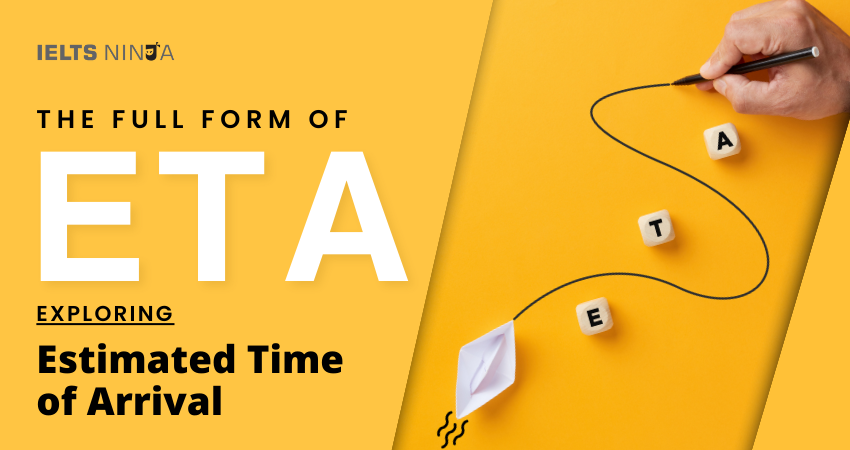When it comes to planning, logistics, and travel, the abbreviation “ETA” holds significant importance. The full form of ETA, which stands for Estimated Time of Arrival or Expected Time of Arrival, is a crucial piece of information that helps individuals and organizations make informed decisions regarding timing and scheduling. In this comprehensive guide, we will delve into the details of ETA, its significance, and how it is calculated and used in various contexts.
What is ETA?
ETA, an acronym for “Estimated Time of Arrival or Expected Time of Arrival”, represents the anticipated time at which a particular event or object is expected to reach its destination or complete a journey. It is commonly used in transportation, logistics, and project management to provide stakeholders with a reliable estimate of when something is likely to happen or arrive.
The Significance of ETA
The concept of ETA is essential for several reasons:
Planning and Scheduling:
ETA allows individuals and organizations to plan and schedule their activities effectively. For instance, it helps travelers decide when to leave for a journey or when to expect a delivery.
Logistics and Supply Chain Management:
In logistics, ETA is crucial for optimizing the movement of goods and resources. It ensures that products reach their destinations on time, reducing delays and costs.
Customer Satisfaction:
Businesses that provide ETA information to their customers build trust and enhance customer satisfaction. Knowing when a product will arrive is valuable for customers.
Safety and Security:
In emergency situations or critical operations, knowing the ETA of rescue teams, shipments, or important events is vital for ensuring safety and security.
Also Read: Best online IELTS coaching & training academy
Calculating ETA
The calculation of ETA depends on various factors and can vary depending on the context. In general, it takes into account the following:
- Distance: The distance to be covered or the time required to complete a task is a primary consideration in ETA calculation.
- Speed: The speed at which an object is traveling or the rate at which a task is progressing is a critical factor.
- Obstacles and Delays: Potential obstacles such as traffic, weather conditions, or technical issues are considered when calculating ETA. These factors can extend the ETA beyond initial estimates.
- Historical Data: In some cases, historical data or past performance is used to estimate future arrival times.
ETA in Different Contexts
Transportation:
In the context of transportation, ETA is used in navigation systems, airline schedules, and public transportation to inform passengers about the expected arrival time at their destinations.
Shipping and Logistics:
ETA is crucial in the shipping industry to ensure the timely delivery of goods. Logistics companies often use advanced software and real-time tracking to provide accurate ETA information.
Project Management:
Project managers use ETA to set deadlines and track project progress. It helps in resource allocation and task prioritization.
Emergency Services:
Emergency services, such as ambulance dispatch, use ETA to determine how quickly they can reach the scene of an incident.
Conclusion
Estimated Time of Arrival or Expected Time of Arrival (ETA), is a fundamental concept that influences our daily lives, from planning our commutes to managing supply chains and projects. It provides valuable information that aids decision-making and enhances efficiency and customer satisfaction.
Understanding ETA and how it is calculated in different contexts is essential for individuals and organizations striving to optimize their operations and ensure timely outcomes. Whether you’re a traveler, a business owner, or a project manager, ETA is a valuable tool that can help you plan, execute, and succeed in your endeavors.








